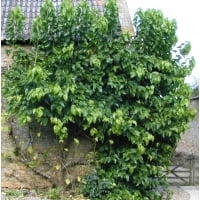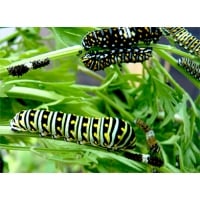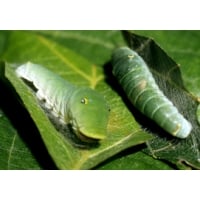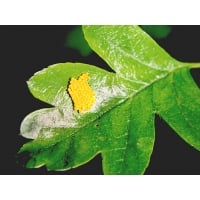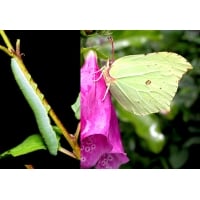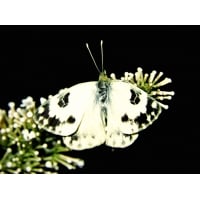SPRING and SUMMER EGGS and LARVAE Order now for supply in season
Osier Willow cuttings S. viminalis
Years ago we planted a stick that was floating down a river in Wiltshire. That was in 1954! It grew – rapidly – producing a wealth of leaves. We tried it as a foodplant and discovered that not only did British species do well on it, but exotic silkmoth larvae as well.
This stick was the daddy of hosts of willow thickets that we have established in Dorset, Cornwall and in France.
Osier is Basket Willow, the flexible essential for basket weaving. It makes a wonderful woven hedge. It can form living sculptures. Winter or summer, Osier makes wonderful screens and windbreaks. Cover for wildlife and game. Osier is grown as a crop for energy production. In short it is a blessing to the environment, and very pleasant on the eye in landscaping schemes.
We are offering a bunch of 10 cuttings for you to try not only as probably the most universal foodplant for larvae, but a great addition to your garden and grounds.
Probably the easiest cuttings to strike and grow. You simply push them into the ground, during autumn or spring. Leaves will appear within the first fortnight if planted in spring, roots quickly follow. In the first year they will more than double in size. Next year, in normal drought free conditions, if you winter prune very hard, you will have perhaps 2 metres of growth on every branch, providing masses of foodplant. You may even be able to feed some in the first year.
You can store cuttings before planting, either in a polythene bag in the fridge, or standing in water. In water they often start to root. It is advisable to plant them before the roots actually burst out of the bark.
This plant is a complete success story – you will be pleased you tried it!
Large White Butterfly Pieris brassicae
Egg batches vary in size but usually contain 20-30 eggs.
No longer the common butterfly it once was. Winter pupae are stored cool for the winter and normally hatch in May.
This is a good species for the inexperienced, and as an introduction to rearing larvae. Keep larvae protected from parasitic flies.
The larvae feed on cabbage but also most Cruciferae which can be better and less smelly for captive rearing! Horseradish is ideal for its large leaves and other species include Rape, Mustard, Sweet Rocket, Turnip, Nasturtium and Watercress.
There are two or more generations in a year.
KOKUSO 21 Mulberry A rarity! A group of 5 robust cuttings.
This sericultural form of Mulberry has been developed in Asia for its large leaves with high nutrition as food for Silkworms. Not generally available for sale, we are offering a limited number of robust cuttings in groups of 5.

The cuttings will develop roots and leaves if put into compost, preferably with manure. Never let the compost dry. Rooting may be assisted if dipped in hormone rooting powder. Mulberry cuttings take longer to root than Willows and Osiers, which are very rapid. Hard winter pruning is repaid with amazing growth, which can reach 1-2 metres on every branch in the following summer.
This is a rare shrub, seldom seen in Northern Europe.
European Swallowtail Papilio machaon gorganus
The breeding season will end in August, after which orders will be booked for the following summer. Demand is always high, and the earlier an order is booked, the sooner it gets sent out at the beginning of the next breeding season, usually in June/July.
Eggs are best kept in a clear plastic box without fresh foodplant. Newly hatched larvae need to eat their egg-shells. When they are ready for green food and wander from the egg shells, using a soft artist's brush, transfer to fresh foodplant. They do best sleeved on growing food, and this is strongly recommended, but can be reared in plastic boxes as long as always kept clean and with fresh food daily. See advice on using Plastic Rearing Containers on this website.
Easy to rear on Fennel and other Umbelliferae, such as carrot tops, Parsnip and Wild Parsnip flowers and fresh leaves. Rue is another foodplant. Very attractive caterpillar, bright green, striped black and orange. Double or even triple brooded.
This species is not suitable for beginners and schools.
American Black Swallowtail Papilio polyxenes asterias
We hardly ever have eggs available. There are some ready immediately.
It is immediately evident from looking at this striking black Swallowtail that it has a lot in common with the British and European Swallowtails and it is indeed so closely related that it will hybridise with either one.
The larvae feed on Fennel and may take Carrot leaves and those of other Umbelliferae. Keep the eggs in a plastic box as described in the introduction to Plastic Rearing Containers. Transfer young larvae with an artist's brush to fresh, high quality foodplant, preferably growing.
The pupae overwinter but may produce a partial second brood of butterflies in late summer.
Tiger Swallowtail Papilio glaucus North America 15 eggs or 10 larvae according to availability
The Tiger Swallowtail is perhaps North America’s grandest swallowtail. As a curiosity, a small proportion of females emerge as melanics, not as beautiful as the typical female, but different! They can be bred in captivity and the larvae are as exotic as many of the tropical swallowtails, with the Papilio eye markings and bird dropping camouflage in the early instars. Try feeding them on Cherry or Lime, and they will probably take a wider variety of foodplants. These have been reported: Ash, Cherry, Tulip Tree Liriodendron, Magnolia, Birch, Poplar, Prunus, Apple, Willow, Alder.
Black-veined White Aporia crataegi
Egg batches (at least 30 eggs) can be attached to growing shoots in a sleeve. Let the larvae create their protective tent and allow them to hibernate there without disturbance, to re-appear in mid-March.
The larvae do well sleeved on Hawthorn (their preferred foodplant), Plum, Blackthorn, Plum or Apple. They live gregariously, spinning a very small and concealed web on the branch, in which they hibernate. The webs appear to be dead leaves, but the larvae spin a very strong silken life-line which is an indication of life inside the apparently dead leaf! Leave the sleeve untouched for the winter.
In spring they awake as soon as the buds burst, and begin to grow very quickly. They pupate often collectively, making very brightly coloured, angular pupae which are greenish white, with contrasting markings in black and yellow.
Brimstone Gonepteryx rhamni
Both larvae and pupae are masters of camouflage. Quick growing, the larvae feed on Buckthorns Rhamnus catharticus or Frangula alnus. There are no substitutes, so locate some bushes in advance. We recommend sleeving the larvae on growing bushes.
Resulting pupae produce butterflies this summer. They hibernate amongst ivy (when closed, the wings resemble ivy leaf undersides). They are difficult to hibernate in captivity so, by releasing the butterflies in summer sunshine, you may help to perpetuate the species each spring in your area.
Clouded Yellow Butterfly Colias crocea
This butterfly migrates and is not resident in Britain. Restrictions on travel have made it difficult to obtain sufficient breeding stock, so there is quite a waiting list. Adequate supplies in 2021 will depend on the ability to travel to obtain breeding stock.
A great favourite with entomologists and easy to rear on potted Clover. The easy way is to enclose the whole pot in a sleeve size 3. The larvae grow fast and will produce butterflies very quickly, particularly in warm conditions.
Bath White Pontia daplidice
Autumn Pupae may also become available.
The larvae feed on Mignonette, a flower of chalk soil, but they also feed on various Mustard family Cruciferae. Some people have done well rearing them on cauliflower - just let them loose on the raw heads!
This is a very rare migrant to Britain, found usually in the Mediterranean region. Baden Powel, a naturalist as well as pioneer, used the dappled pattern on the butterfy’s wings to disguise the plan of Mafeking when dispatched under siege!
EARLY Small Tortoiseshell Aglais urticae
One of the best species for young people and beginners. Larvae are sent in April/May. The best way to keep the young caterpillars is on potted nettles which should be prepared in early spring , regularly watered, and kept out of doors to make stocky growth. Prepare more than one pot of nettle. When the young larvae are received, bring the potted nettle indoors and place the young larvae on the foodplant, where they will look after themselves until they finish the food and are large enough to be kept in a cage on cut nettle in a jar of water. In a matter of weeks the pupae are formed hanging from the cage top, and the butterflies emerge in a little over a fortnight.
The butterflies can be kept in a cage for a few days, with plenty of flowers for nectar, and then released to help the wild populations.
Keeping two species of larvae together on the same foodplant? It is sometimes possible, but their way of life may differ and we recommend keeping them separately.
EARLY Peacock Butterfly (Inachis io)
Peacock and Small Tortoiseshell populations are seriously depleted recently, due to the butterflies waking in the mild winter and dying of starvation. This is a a chance to help local Peacock populations.
The larvae live in tight clusters on the tips of nettle. Young larvae do best on potted nettle. Keep the pots outside until needed indoors for the first larvae. When the larvae are larger, keep them caged on cut stems of nettle in a jar of water. Pupae are formed in a matter of weeks, hanging from the cage top. Butterflies emerge in about 3 weeks. They can be kept for a few days in a cage with flowers for nectar, then released into the wild.
Keeping two species of larvae together on the same foodplant? It is sometimes possible, but their way of life may differ and we recommend keeping them separately.



